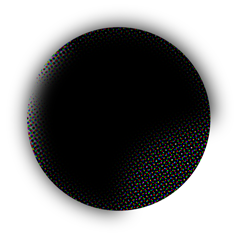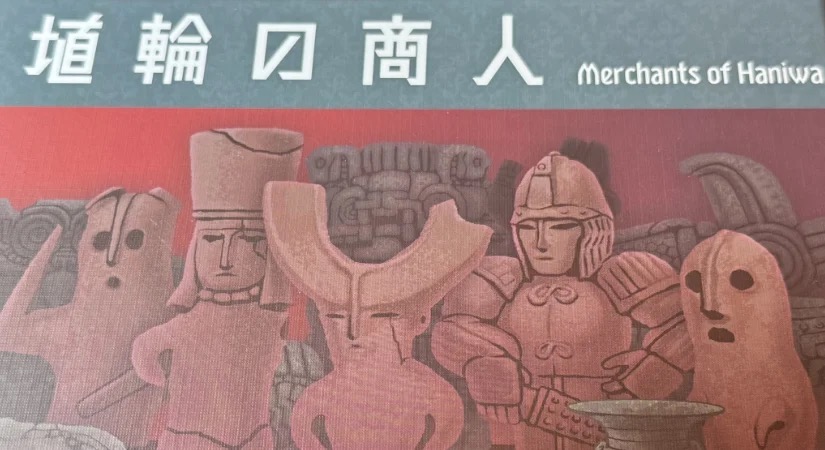I picked up Merchants of Haniwa (埴輪の商人) at Tokyo Game Market and had the chance to play with some friends. It’s a game for three to five players and plays for about 30 minutes.
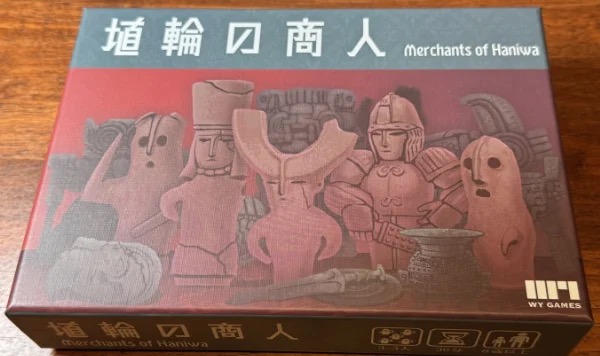
But first, merchants of what? Haniwa are terracotta figures from the Kofun era of Japan with a distinctive shape. Once you’re familiar with the shape, you’ll spot references to them all over the place. 2023 Fall Game Market had two Haniwa related games for sale, and intrigued by the different approaches, I picked up both. We’ll be looking at Merchants of Haniwa this time, but we’ll take a look at the other one next time.
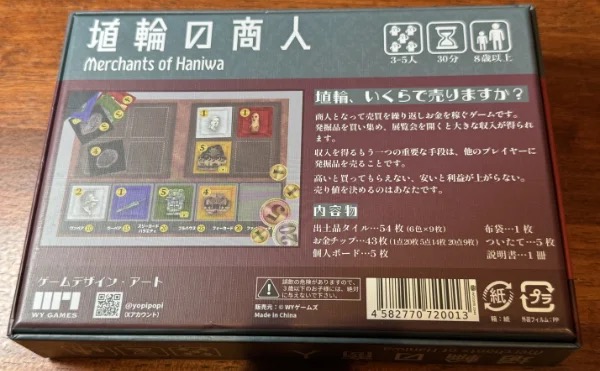
Merchants of Haniwa is a tile-based game with matching mechanics similar to poker. There are numbered, color coded tiles, with each color having an archeological theme that’s not limited to Haniwa. Other colors represent different eras, such as Ancient Greece.
Components
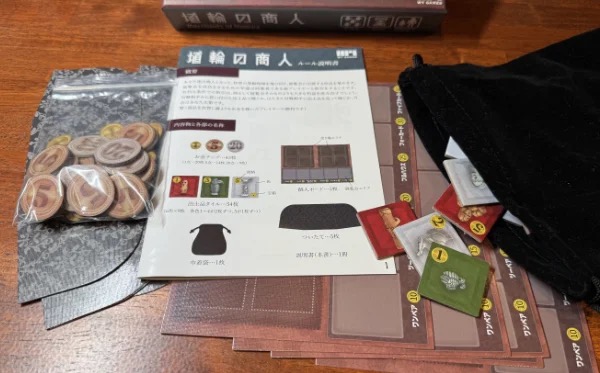
The box contains 43 money chips, 54 artifact tiles, 5 game boards, 5 partitions to hide your money, a cloth pouch and an eight page rulebook. The components felt well made, fit with the theme, and including the bag was a nice touch.
Rules
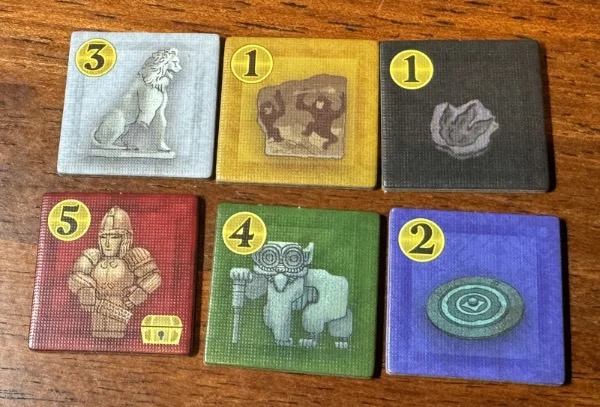
Players become merchants traveling the world’s archeological sites looking for rare finds to exhibit. The player that earns the most money, wins. Despite the thematic focus on Haniwa, they are not the only artifacts in the game. Each of the six tile colors focuses on a specific type of artifact. The price to purchase the artifact is listed on the top left of the card.
Setup
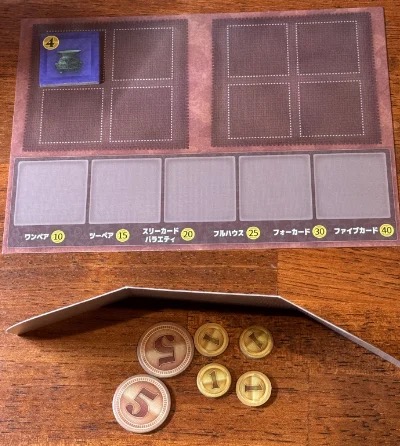
Each player places a game board and partition in front of them. Players begin the game with 14 points (coin chips) and conceal them behind the partition. The amount of money in the bank is determined by the number of players. Finally, the artifact cards mixed in the provided bag.
The game board has two sections: one is the sale area, itself broken into two boxes of four space each, and the exhibition area, with five tile spaces. Starting with the first player, each player draws a number of tiles equal to their start position (one for the first player, two for the next, and so on).
Taking Turns
Gameplay proceeds with each player taking a turn. When the bank runs out of money, the game ends at the end of the current turn. Players then count their coins and the player with the most wins. The creator has a detailed explanation (in Japanese) with pictures on their blog.
Purchasing Phase
On their turn, a player performs a Purchase Phase and Excavation phase in order. In the Purchase Phase, the player can either purchase from another player or from the bag. When purchasing from a player, you choose a box on another player’s board and purchase all the artifacts in the box for the sum of prices marked on each tile. For sellers, placing tiles is a balance of making them attractive enough to purchase without being too expensive. If purchasing from the bag, you draw a single tile and pay its price; if unable to pay, you reveal your money and pay all of it to the bank. Regardless of which method is used, you place the tile(s) in the exhibition area of your game board. Some tiles have a treasure chest on them. When purchasing one of these, you draw a tile from the bag for free.
You hold an exhibition if you have five tiles in your exhibition area. This is where the poker element comes into play, with poker hands based on tile color determining the points (money) earned for your exhibition. Values range from ten points for one pair to forty for five of a kind. One of each color gives 20 points.
Excavation Phase
During the excavation phase, players draw three tiles from the bag without paying their cost and place them in the sale area of their board. Both new and existing tiles can be rearranged or discarded.
Play Report
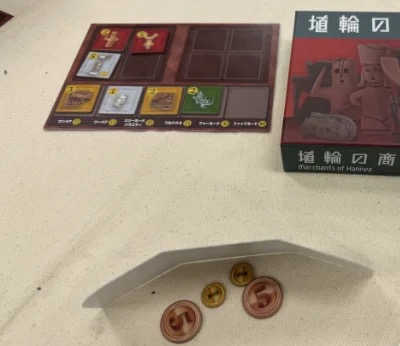
I played with five people at a friend’s board game event, and everyone enjoyed the game. The mechanics were easy to grasp, but there was a slight misunderstanding about banking at first that was quickly rectified.
The mechanic of returning artifacts to the bag led to a humorous comparison to the “God Hand” archeological hoax. The hoax was an archeologist planting artifacts and then “discovering” them.
Acquiring
Made by WYゲームズ (WY Games), the game is available on Amazon Japan for ¥2,980.
